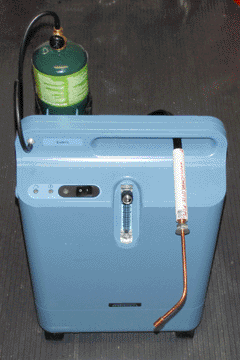
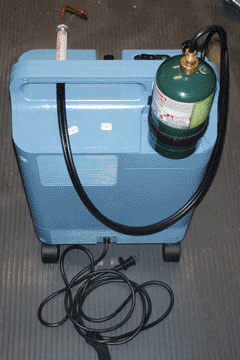
The limitations of air-fuel torches have become apparent; while the amount of heat can be increased by making the torch larger, the temperature of the flame itself cannot. In order to work large pieces of glass, or in the future to work borosilicate glass, I needed an oxy-fuel torch. For a source of oxygen, I found a used oxygen concentrator on Craigslist for $160, which was in very good condition and had only 11,000 hours on it. It is rated for 5 liters per minute of oxygen, but can achieve upwards of 7. It also has a velcro strap intended for holding a bubbler, which I repurposed to hold a small propane tank. I then purchased a small Bernzomatic oxy-propane torch on Ebay for $20. This turned out to be slightly too small, and the tip threads were metric so I couldn't make interchangeable tips. Rather than modifying the torch, I took it apart to see how it worked and then built my own version, keeping the double hose and the propane valve to use with the new torch.
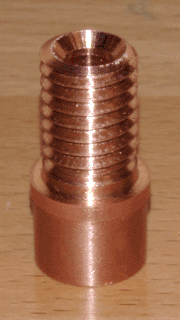
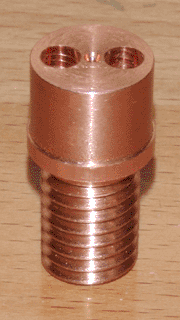
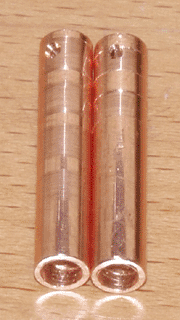
The body of the torch itself is essentially a Y-junction, which I made from 5/8 inch copper rod. One end has a 3/4 inch length of 1/2-13 threads with a 1/4 inch center hole, and the other has two 3/16 inch holes to accept the inlet tubing. There is nothing special about the mixing chamber, the drilled holes simply meet in the middle. The only important thing, which I found through trial and error, is that the oxygen and propane must pass through a small orifice (seen on the inlet tubes to the right) for adequate mixing. An earlier design had a wide open tube on each side, and the resulting flame had the tendency to flutter. I also found out that the oxygen orifice should be larger than the propane orifice, due to the ratio of gases needed for combustion being roughly 5:1. I started with both orifices being 1.2mm (0.048 inches) and increased the oxygen orifice diameter until the flame stopped fluttering. This turned out to be at 1/16 (0.0625) of an inch.
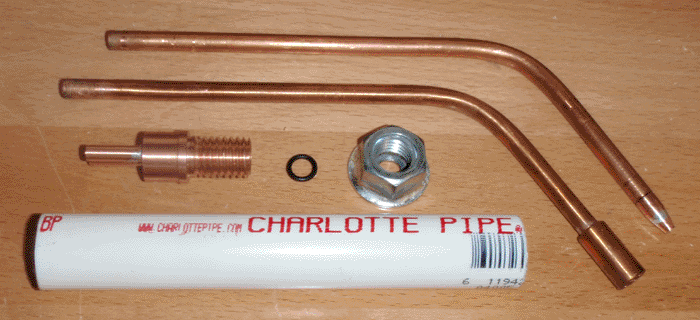
To connect tips to the torch body, I used the same compression fitting mechanism I designed for my vacuum system. It holds the tip snugly and provides an airtight seal, while at the same time allowing it to pivot. The only difference is instead of using a cap nut with a hole drilled in it, I soldered a washer to an ordinary nut. I found this provides better compression of the O-ring, due to less mechanical interference with the threads. The neck of each tip is ordinary 1/4 inch copper tubing, and the tip itself is copper rod with various holes in it, soldered in place. The small tip has a single 1/16 inch hole, and the larger tip has five 1.2mm holes in an X pattern. The tips themselves are extremely easy to make, and I anticipate that I will make many more varieties of them as I begin using them to make tubes. Finally I cut a length of PVC tubing for the handle, connected the oxygen and propane hoses, and pressed everything tightly together. Below is a video of the torch in operation.